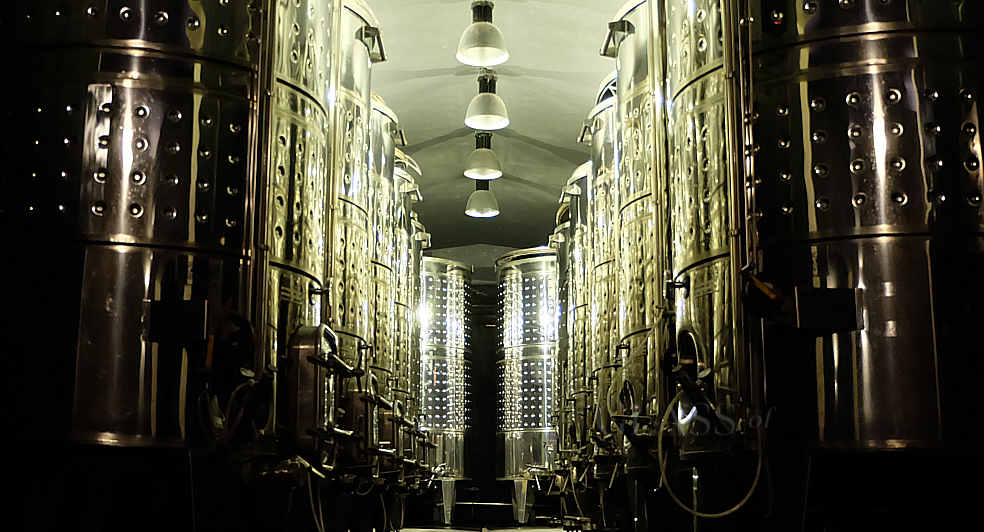Sparkling Wine Production Methods
15th August 2023

Sparkling wines come with many variations from flavours to prices, much of this will be down to how it is made, the production methods. When we venture in to learning more about wine, we hear production terms such as tank method, Champenois method, Ancestral, traditional, carbonated and more, though what do they all mean?
Sparkling wine production across the world relies on many varying factors so as to achieve their recognised characters in the art of wine making. From temperatures to humidity, grapes to real estate costs, there are many factors to consider when the finished sparkling wine is in your glass. Some go for quality, others go for cheaper economics, some wish you to understand the locality whereas others spend on branding looking to attract the jet setting clientele.
Sparkling wine production methods vary so to cater to where in the world the winery is, the style of wine they wish to make and what economics there are. Some wine regions are famous for a certain style of wine production whereas others are open to multiple styles – A good example of this is in England where both traditional method and tank method are used, they are classified differently as English Sparkling Wine and Sparkling Wine from England respectively. Even Prosecco which is famous globally not only has Charmat Method as it’s main production, but there is also frizzante and even still Prosecco which can be found.
So, what sparkling wine production methods are there? There are many and even each method can vary depending on winery, region and country.
Traditional Method: Within this category we also see descriptions such as ‘méthode traditionelle’ ‘metodo classico’ and ‘méthode Champenoise’. Here we will see the still grape juice taken from storage, ie tanks / barrels to be bottled where yeast and sugars get added – A crown cap secures the wine within the bottle and required aging takes places where the yeast can ferment the sugar contents so to produce alcohol and CO2. Famous wines made in this method include Champagne, Cap Classique, English Sparkling Wine, Franciacorta and Crémant.
Tank Method: Here the secondary fermentation takes place with a pressurized tank – The yeast and sugars are added to the tank and the wine is chilled down so to manage / stop fermentation. The finished sparkling wine is then added directly to the bottles and cork added thus ready to sell after the required resting time period. Famous wines made in this method include Prosecco, Sparkling Wine from England and Lambrusco.
Transfer Method: A less common production method, though one we should be aware of. Here the secondary fermentation takes place in the bottle, but after a short period of time the bottles are then emptied back into a (pressurized) tank, filtered and then once again bottled. The reasoning is said to be that it avoids added time / expenses of disgorgement. More popular in new world wine regions such as Australia and New Zealand.
Continuous Method: A three step process seeing the base wine being contained in one tank where yeast and sugar are added to create the alcohol and bubbles. Then it gets transferred to another tank where the oak chips are added so to create the toasty / yeasty characters. Finally it gets transferred to a tank so to filtrate the final product where it then gets transferred to bottles.
Carbonation: Not so glamorous yet still sparkling bubbly! Here the base (still) wine gets carbonated via an injection of carbon dioxide.
Dioise Method: Very little knowledge of this production method and used mostly for the Clairette de Die AOC sparkling wine from France. Two fermentation processes with bottles being filled though then emptied, filtered through and then rebottled.
Triple Fermentation Method: Very rare process and from our memories at Glass of Bubbly, so far have only tasted them via one winery in the Marche region of Italy, Quacquarini. A part of the grape harvest is vinified and a part is left to hang / stored in wooden racks for a period of time (approximately 2-3 months) before being crushed and added to the blend. Fermentation / bubbles occurs via autoclave.
Ancestral Method: Also known as ‘méthode ancestral’, ‘gaillacoise’ and ‘pét-nat’ / ‘pétillant naturel‘ (which means ‘natural sparkling’ in French). The oldest sparkling wine production method said to have dated back from 1531 in France (founded by Monks in Limoux). Single fermentation within the bottle with dead lees remaining in the bottle – Blend is added to bottles directly while still fermenting with most times a crown cap added to seal.
![]()
Christopher Walkey
Co-founder of Glass of Bubbly. Journalist and author focused on Champagne & Sparkling Wines and pairing them with foods.
